None of our pet dogs are given instruction manuals about how to live happily with people.
Each and every dog has to be taught what the rules are in the house they live in, and how to interact with people in public that they don’t know.
And we can help our dogs learn how to be the best pets possible by training them.
But since there are a number of ways in which dogs can learn, there are many schools of thought about the best dog training methods.
One training paradigm employs something called “alpha rolls” to alter a canine’s behavior. Alpha rolls are a bit controversial, so we’re going to dig into them below and explain everything you need to know about the technique — including whether or not you should alpha roll your own dog.
Key Takeaways: Should I Alpha Roll My Dog?
- “Alpha rolling” is a technique some trainers recommend for addressing behavioral problems in dogs. It is purportedly used to “assert dominance” over your dog.
- While some trainers continue to recommend owners employ the alpha roll, most reputable trainers have abandoned the concept, recognizing that it is based on a flawed understanding of canine relationship dynamics.
- Worse than being simply ineffective, alpha rolling your dog can cause significant harm to your relationship with your pup. It can also worsen problematic behaviors and increase the chances of a bite occurring.
- Instead of alpha rolling your dog, you should employ positive, force-free methods of training to correct problematic behaviors.
What are Alpha Rolls?
In the 1940s, a group of scientists were studying the social dynamics of wild wolves. During the course of their work, they came up with a societal structure framework called “dominance theory.”

They posited that the strongest individual in a wolf pack spent time and energy physically manipulating the other pack members to stay in power and quell any thoughts of dissent or takeover. One of the physical interactions that the scientists described was called an alpha roll.
An alpha roll is described as forcibly rolling a dog onto her side or back and pinning her there until she stops struggling.
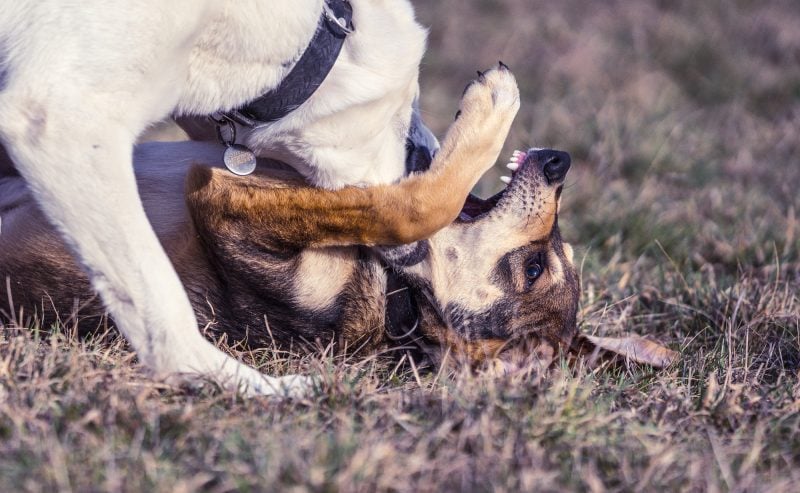
The reasoning behind the interaction, according to Schenkel’s wolf studies, went like this: When wolf A felt offended by something wolf B did, she’d grab wolf B, and pin her down to establish dominance.
Then, in 1978, the Monks of New Skete released a book called “The Art of Raising a Puppy” that shaped the way dog training was understood by the average dog owner. The book encouraged owners to use alpha rolls to discourage unwanted behaviors and to “enforce dominance.”
In other words, when Fluffy misbehaved, you should pin her down to re-establish a proper pecking order. At least, that’s what this alpha dog training approach advocated.
But as trainers learned more about dogs and canine cognition, attitudes began to change.
Fast forward to 2002, and the same group of trainers who wrote that game-changing book recanted their advice regarding alpha rolls, explaining that it was an unnecessary and unsafe technique for the average dog owner to use.
However, some dog trainers who focus their training on punishment and coercion still continue to encourage pet owners to alpha roll their dogs. This is especially common when the dog is doing a behavior that those trainers say is “trying to be dominant.”
The unwanted behaviors lumped into this category could be anything from growling at an owner, jumping on a guest, and barking, to any behavior that the caretaker deems inappropriate.
As you can probably surmise by this point, K9 of Mine does not condone the use of alpha rolls.
As Andrea will go on to explain in more detail below, they’re counterproductive, unnecessarily traumatizing, and based on outdated views of canine behavior.
But, we felt that it was important to share a video demonstrating the technique for our readers.
Discretion is advised, however. This is not a particularly easy video to watch.
Ask a Professional Trainer: Do Alpha Rolls Work?
In short, no.
Alpha rolls do not work.
What alpha rolls claim to do boils down to displaying dominance while telling the dog not to do a particular behavior.
But this is not what is communicated to a dog who is being alpha rolled.
While alpha rolling a dog may interrupt her behavior, it does not inform a dog exactly what she did that the person didn’t like. In fact, the experience is so terrifying to the dog that the learning part of her mind turns off as the survival fight/flight/freeze portion takes over.
Since a dog being alpha rolled cannot fight or flee, the only option left is to “freeze.” Alpha roll proponents call this “calm submission.”
However, when a dog is forced to submit in this way, she is certainly not calm. Instead, the dog is displaying her abject terror of the situation and the person laying on top of her.
As alpha rolls continue to be used, a dog’s fear of the situation or person grows, and so do her feelings of insecurity. Often, dogs who are alpha rolled eventually display aggressive behaviors fueled by this fear.
Accordingly, alpha rolls tend to do the exact opposite of what proponents say they can accomplish. People who attempt to change their dog’s behavior with alpha rolls are creating a pet who is fearful, anxious, bereft of trust, and is more likely to be aggressive with familiar people.
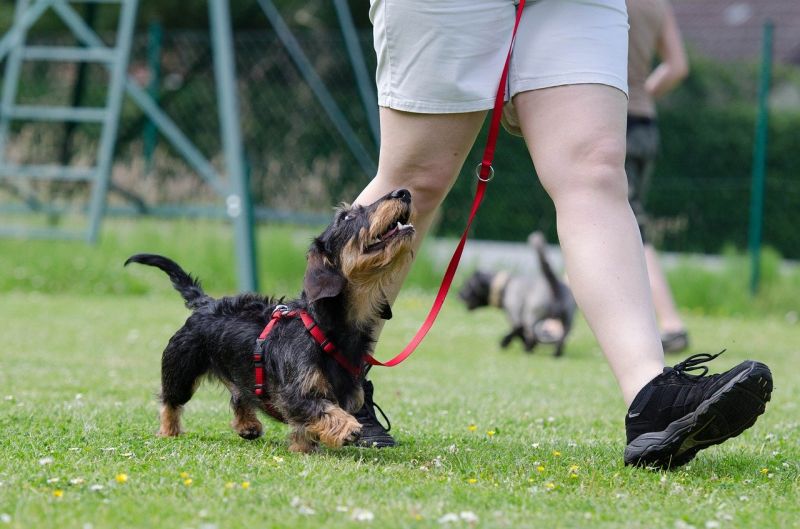
What Does Science Say? Does Research Support the Use of Alpha Rolls?
By and large, empirical research into the use of alpha rolls confirms what most modern trainers already know — they’re ineffective and counterproductive.
For example, a 2008 study by the School of Veterinary Medicine at the University of Pennsylvania found that more than one-quarter of the dogs who’d been trained via confrontational methods (including alpha rolls) responded aggressively.
Even more troubling, dogs who’d already exhibited various types of dog aggression prior to confrontational training methods were more likely to exhibit aggressive behavior when alpha rolled.
This means alpha rolling is not only unhelpful and counterproductive, it is also dangerous.
Early alpha-rolling proponents would recommend employing the technique anytime a dog growled. But this is a very bad idea.
Why Punishing a Growl Is a Bad Idea
Growling is one way dogs express insecurity, and it is often used as a warning. If the growl doesn’t have the intended effect, a bite may follow.
If a dog that growls is then punished with an alpha roll until it is silent, the next time the dog is uncomfortable enough to consider biting, she may suppress her growl to avoid being punished.
If the dog has no warning signal left, she may bite without warning, and the insecurity that caused her to growl in the first place has not been addressed.
Growls are valuable communication tools and are important to acknowledge! We certainly don’t want to encourage a dog to growl, but taking a growling dog seriously is a good idea.
Alpha rolls are ineffective for a variety of reasons. A few of the most important problems with them include:
- They cause dogs to fear the people around them
- They do not teach dogs what we want them to do, or how to avoid being punished
- They increase a dog’s insecurities
- Alpha rolled dogs are more likely to bite
- While physically manipulating a scared dog, she may be injured as she attempts to escape
- This theory has already been debunked by reputable scientific studies and the very people who invented it
What’s Dominance Got to Do with It? Don’t Dogs Want to Be in Charge?
Our understanding of the importance of dominance and hierarchical structure regarding pet dogs has changed drastically over the last 80 years.
Part of this shift has occurred because we now recognize flaws with the scientific method used in the past, but it also relates to general misunderstandings of canine behavior.
We’ll talk about each of these two aspects below.

Problems with Canine Science in the Past
When those wolf pack societal studies were being done in the 1940s, many people thought that the information gleaned would help us better understand our dogs, since dogs and wolves are genetically very similar.
However, the study had many flaws.
For example, wild wolf packs are usually formed of related individuals that have known each other for most of their lives.
But the group of wild wolves that the study collected data from in the ‘40s were random, unrelated individuals. They were also housed in a captive enclosure which, we now know, was much too small to house that many animals.
The scientists saw behaviors that they termed “alpha rolls” because the wolves involved in those interactions were highly insecure about their companions and the captive situation they found themselves in.
Some modern animal behaviorists consider similar canine behaviors which involve pinning another animal to the ground, even during play, as rude, inappropriate, and unsafe.
The only time our pet dogs would perform a behavior like an alpha roll to another dog would precede an attempt by the attacking dog to injure or kill the dog being pinned.
What we’ve learned about actual wild wolf behavior since the flawed study done in the ‘40s is that some wolves will voluntarily roll over and submit to others. This usually happens when one wolf is trying to appease another, and the action is intended to calm the irritated wolf.
The goal is to diffuse tension between the wolves to avoid a physical altercation. Most of the time, the two wolves involved will not even touch each other.
In human cultures, showing deference by kneeling before royalty or bowing as a greeting would be a similar type of submissive behavior.
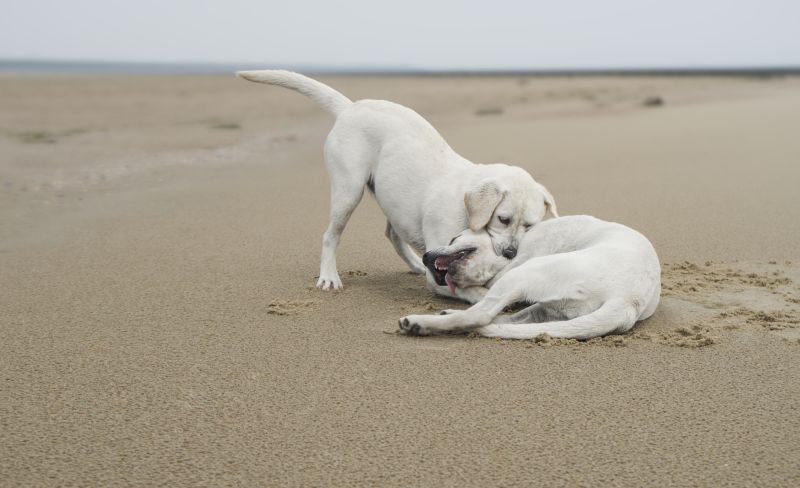
Flawed Thinking About Dominance in Dogs
Dominance theory states that our pet dogs are always trying to figure out how to outsmart or outrank us. But the most recent discoveries about how dogs communicate show that this is not the case.
Dogs do not think that the humans in their lives are other dogs, nor do they treat us the same way they would another dog.
Dogs only communicate with each other using dominant behavior or posturing when they aren’t sure who’s in control of a resource.
Frequently, dogs who spend any time around each other figure out quickly which of them feels the most strongly about controlling particular resources, such as food, toys, sleeping places, and attention.
This understanding allows each resource to be peacefully controlled by the dog who feels the most strongly about that resource.
It may mean that our dogs do not “share” as well as we may want them to, but sharing is a concept that someone taught to us at a young age — we aren’t born intuitively knowing the importance of sharing.
Also, it’s important to understand that our dogs (Canis familiaris) are not the direct descendants of modern grey wolves (Canis lupus).
Instead, modern wolves and domestic dogs had a common ancestor 20,000 to 40,000 years ago. But our pet dogs are not descended directly from any modern wolf species.
Modern grey wolves and domestic dogs are evolutionary cousins — not parents and children, so to speak.
This means, while the behaviors of wolves may have some similarities to the behaviors of our pet dogs, the two do important exhibit differences.
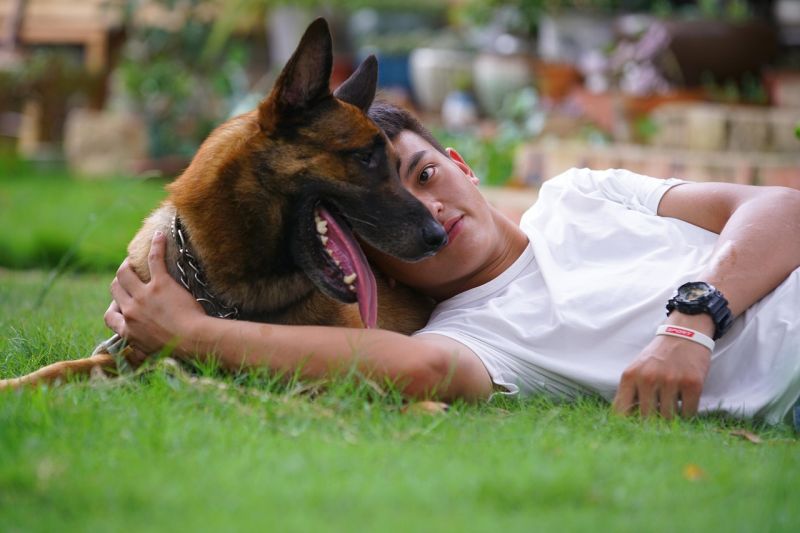
Punishments Inhibit Learning: Calm Canines Learn Best
Quite a few scientific studies have been done to find out how dogs learn, and this 2014 study published in the Journal of Veterinary Behavior found that training methods using positive reinforcement are less stressful for the dogs, and better for their welfare.
Others — like this study published in 2004 by Universities Federation for Animal Welfare — have shown that training with positive reinforcement results in higher levels of obedience, while dogs trained with punishment show more problematic behaviors.
One other study — this time published in a 2008 issue of Journal of Veterinary Behavior — showed that dogs trained using positive reinforcement were less likely to show aggression and fear.
There are additional studies available, but you get the point.
The inclusion of any punishments during training slows down learning and damages the excellent relationship that R+ learning fosters between the trainer and the learner.
So, once again for the people in the back, alpha rolls are a bad idea and counterproductive to your training goals.
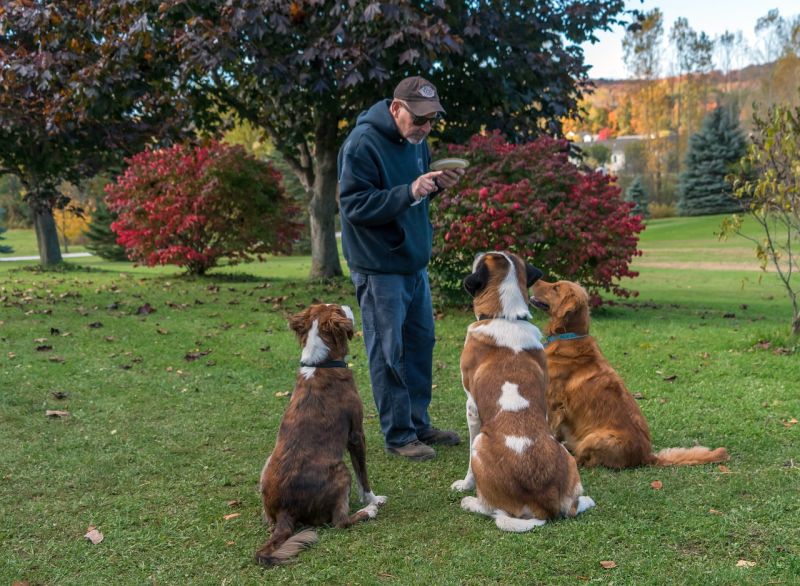
If Alpha Rolls Are a Bad Idea, What Do I Do Instead?
Since alpha rolls are a debunked and out-of-date training technique, how should you relate to and train your dog instead?
Many of the most modern, extremely successful training techniques are based on “positive reinforcement,” (sometimes written as R+). These techniques are also called reward-based training. And yes, these methods are successful with aggressive dog training!
This type of dog training approach is far superior to most others, and it’s easy to see why.
Dogs are like us — they will repeat actions that seem to result in things they like. So, if a dog is doing something we don’t like, the first thing to figure out is: What reward does the dog get when it does that particular behavior?
If you can remove or prevent the reward your dog is receiving, replace her behavior with something you’d rather her do, and give her reinforcement that she finds motivating, she will enjoy doing the new behavior and stop doing the old one.
For instance, let’s imagine that your dog has been “counter surfing,” or jumping up on the counters to grab and eat food.

When she was smaller, she couldn’t reach the counters. But now that she has discovered the wide, tasty world of countertops, no foodstuffs are safe.
She won’t do this behavior in front of you, but as soon as you leave the room or turn your back, your snack is gone like it never existed.
Let’s break this behavior down.
- The reward is: your food.
- The antecedent is: your food on the counter, plus your inattention.
- The behavior is: jumping up, grabbing the food, and consuming it.
To solve this problem, let’s start with removing the reward.
- Step One: Keep an eye on your dog, and do not leave food unattended on the counters at all, not even for one second. If the reward for a problem behavior is gone, usually the behavior will extinguish itself over time.
- Step Two: Teach a “Wait” command at the kitchen entrance. This is an incompatible behavior, since your dog cannot jump onto the kitchen counters if she is not in the kitchen. Occasionally tossing her a treat as she waits patiently at the kitchen threshold will remind her that she’s still doing a great job, that she doesn’t have to come into the kitchen to get a tasty treat, and that you’re the source of good things.
- Step Three: Enrich your dog’s life a little more! Giving her a puzzle toy with her dinner inside is a great way to occupy her attention while you make your food and eat it. If she is too focused on her toy to worry about what you’re up to, your food is safely in your belly before your dog knew you were making it.
At no point during this training example is your dog scared, upset, or in pain. In fact, teaching her an “incompatible” behavior (one that won’t allow her to exhibit the problematic behavior you’re trying to stop) gives you the opportunity to bond with her more.
Plus, she’ll be earning treats from you for being good! Win-win!
The moral of this training story is: Supervise your dog, and try to imagine what sorts of rewards could motivate your dog to misbehave.
Then, make sure to set your dog up for success by providing her with an environment where the best things in her life come from you!
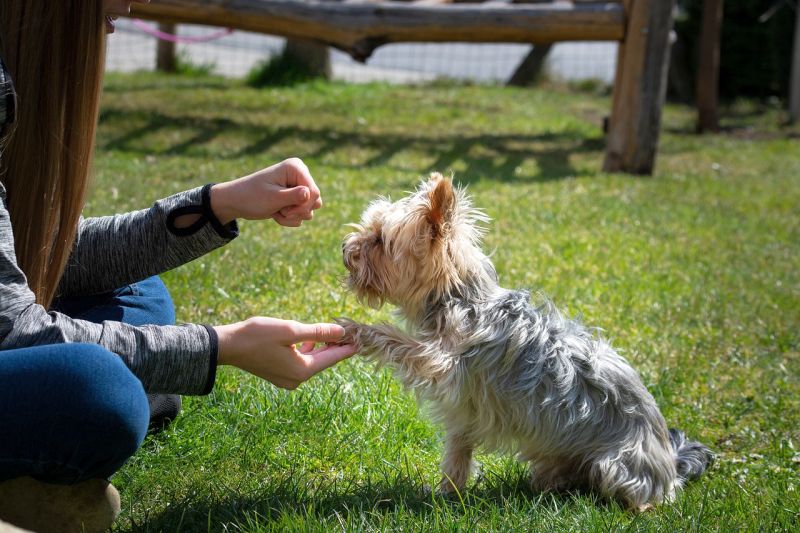
Finding a Good Force-Free Trainer
If you are training a dog and she isn’t learning as quickly or effectively as you’d like, you should consult a trainer or canine behavior expert.
There are professional dog trainers in most areas who use positive reinforcement training to help dogs and their people reach their training goals. There are also trainers who provide long-distance training solutions you can consult.
Trainers of this type are also known as force-free trainers. Searching for positive reinforcement or force-free trainers in your area should give you some good options to explore.
But if you’re having difficulty figuring out what kind of techniques a trainer uses, simply asking them what sorts of problem behaviors require corrections or punishment should get you your answer.
For instance, if you ask a trainer what type of equipment you will need to train your dog to walk nicely on a leash and they encourage you to acquire a pinch or shock collar, this indicates that the trainer tends to prefer punishment over positive reinforcement, since shock and pinch collars can cause a dog pain.
Alternatively, if the trainer says you can use whatever comfortable walking equipment you want and encourages you to get a treat pouch and some small, tasty training treats to go in it, it’s a good bet that this trainer will be using positive reinforcement only to help you train your dog.
Here are a few links to check out if you are interested in finding a force-free trainer who uses just positive reinforcement techniques to help you train your dog.
Alpha Roll FAQs
Alpha-rolling is a topic that creates curiosity and, unfortunately, a lot of confusion. We’ll try to help you understand the technique a bit further by answering some of the most common questions about the subject below.
Should you alpha roll your dog?
No. Alpha rolls are a debunked and dangerous training technique, which do not accomplish any training goals and have been shown to increase a dog’s aggressive behaviors.
Are alpha rolls harmful for dogs?
Yes. Owners who use alpha rolls increase their dog’s insecurities and erode their trust in you. They become fearful of the people they should trust the most, and fearful dogs are more likely to bite.
How do I show my dog I’m the alpha?
Dogs don’t want to be in charge, so you don’t need to prove anything to them. None of our dogs’ behaviors are an attempt by them to control us. There is no reason why you would need to do anything unkind to your dog as part of her training.
Does pinning my dog to the ground help train her?
The only thing pinning your dog to the ground will teach her is to be afraid of you, and it makes you untrustworthy in her eyes. In the future, she will be more likely to perform aggressive behavior when she is afraid — including some she may aim in your direction.
***
Luckily for our dogs, we now know that alpha rolls are a dangerous and unkind way to interact with them.
Additionally, alpha rolling is also completely unnecessary! There are so many other ways to teach our dogs, which are excellent at helping them learn while allowing us to continue to grow the loving, trusting bond that is the best part of bringing dogs into our lives!
Have you used any positive reinforcement training to help your dog learn? Which of your dog’s worst problem behaviors were changed using positive reinforcement? Have you worked with a professional force-free trainer to successfully help your dog learn something new?
Share your experiences (and any questions you may have) in the comments below!
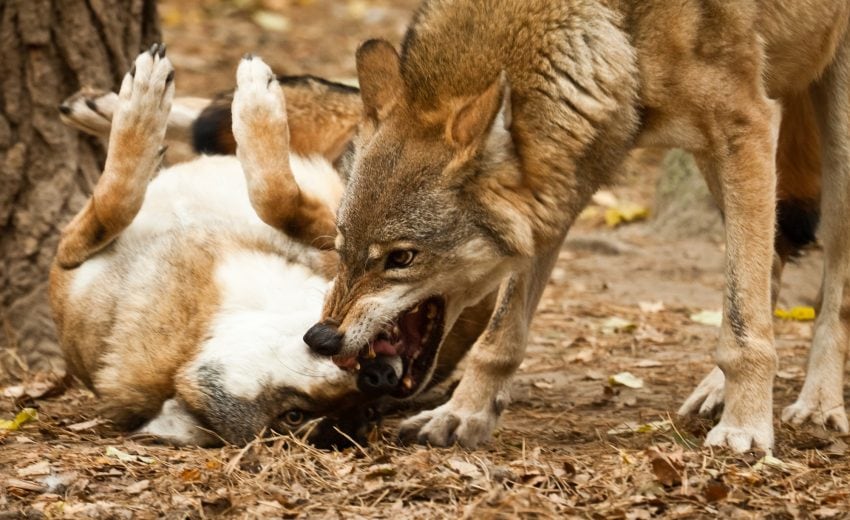
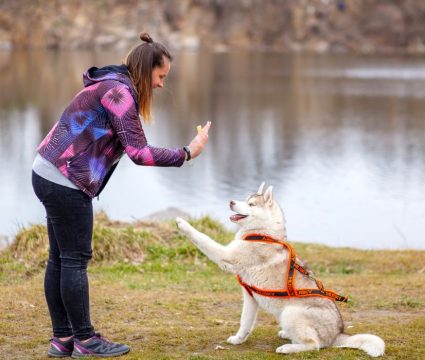



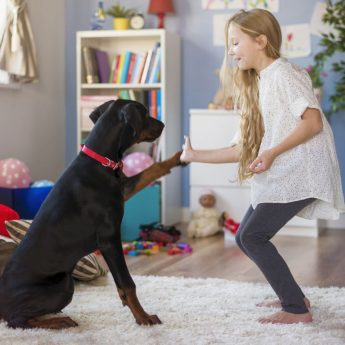
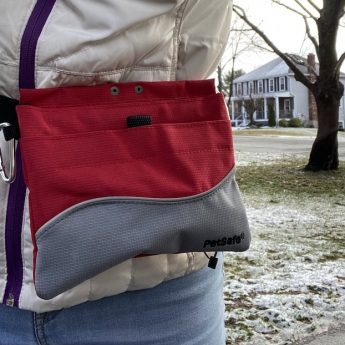
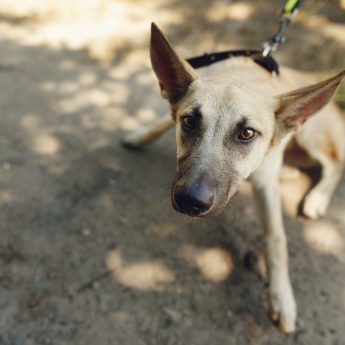
6 Comments
December 27, 2021
This article is clearly meant for female dogs only. What do I do with a male dog? Or is it that this article isn’t gender inclusive?
December 29, 2021
Hey, Bobert.
Of course Andrea’s advice applies to dogs of both sexes. It’s standard writing practice to pick a sex for dogs in a given article and stick to it.
🙂
December 24, 2021
This is an excellent article. I also have a question. My boyfriend has been alpha rolling our dog but I didn’t know until now it was a “technique” with a name and scientific proof that it is detrimental. I have asked him to stop, but is the damage he already did going to impact only his relationship with the dog or possibly my relationship too even though I am not the one doing the alpha rolling?
December 29, 2021
Hey, Megan.
It’s tough to say, but it is probably going to primarily affect your boyfriend’s relationship rather than your own.
That said, we’d definitely encourage you to share this article with him so he’ll stop — it’ll be better for all parties!
June 13, 2021
Completely disagree. It should be used on a case by case basis. A small breed of dog may have the “terror” you describe for obvious reasons. But how you do this process and the energy you apply will determine your results. A calm non aggressive but dominant roll with gentle voice and action has always calmed the dogs I’ve worked with. My last dog was an Akita and quite challenging in this regard. The role was always within a second or two of the action and he knew by my response, exactly why it happened. In fact he started looking up at me instead of his trigger looking for guidance in normally stressful situations. After one or two applications I would use the correction sound I used during the rolling which was similar to a soft crow call and didn’t need to continue rolling at all. Now my little dogs only need a soft touch on their backs to break the triggers and look to me to resolve the issue the perceived. It is an application to be used by professionals who understand its applications, including all the factors enrolled including breed, size, level of aggression, possible reasons for aggression ect ect. These conclusions write off one of many tools that experienced dog handlers may employ to change a dogs energy levels, focus, confidence, overall health due to lowered stress level and many other positive possible results. Dogs have submissive tendencies in their genes and in some cases, and some breeds and some situations, it is a very useful tool.
June 14, 2021
We’re obviously not going to change your mind, Todd, so we wish you the best of luck.
We’ll reiterate though: Alpha-rolling is based on a flawed understanding of canine behavior.